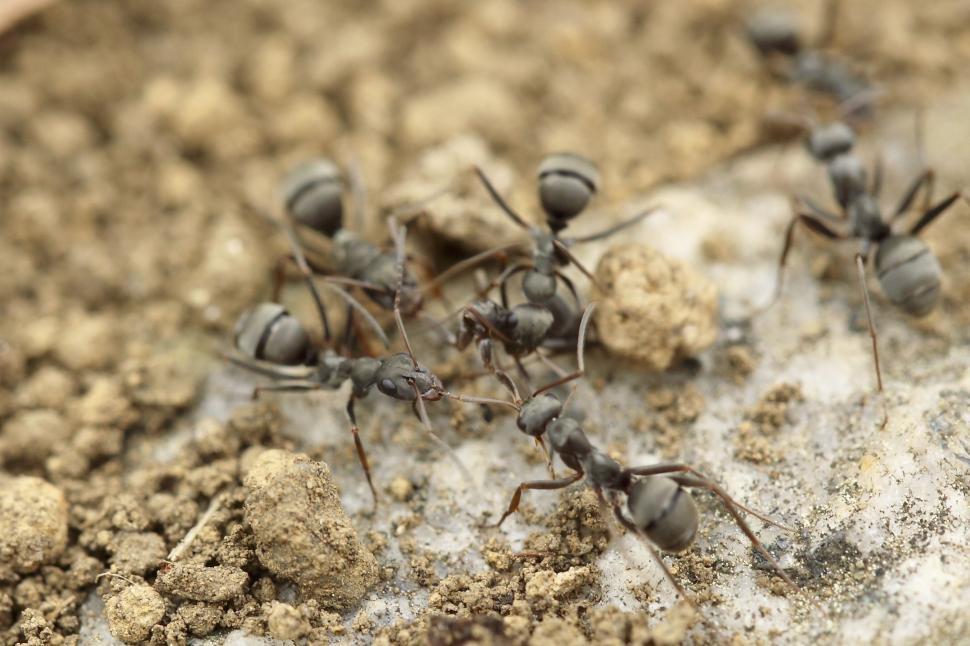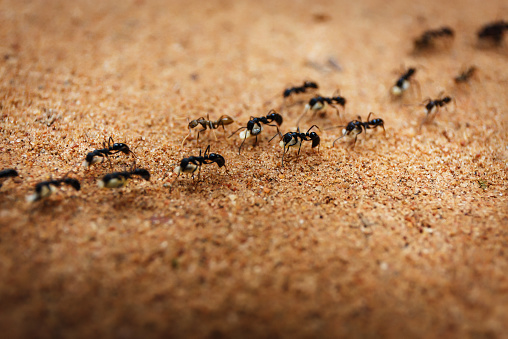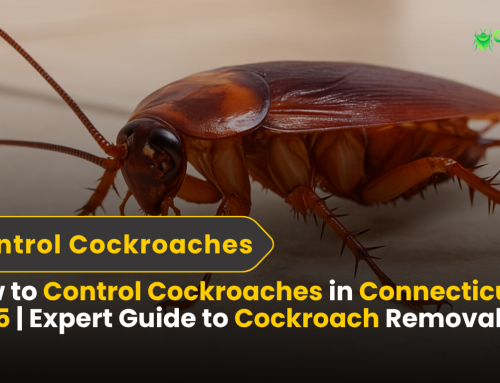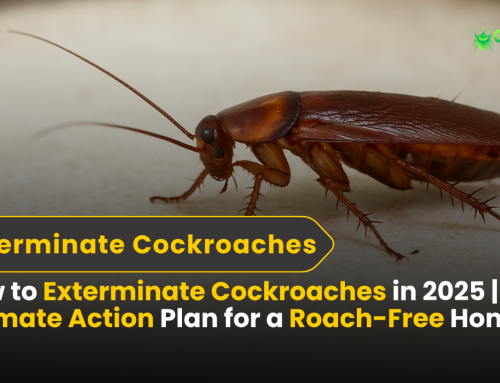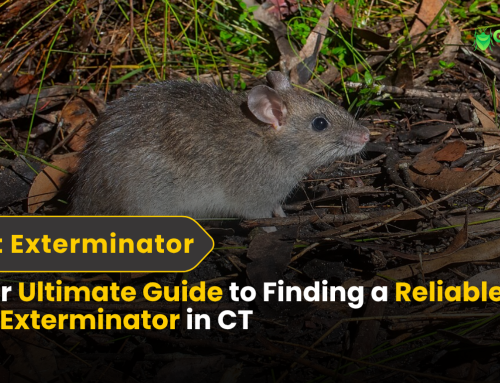How to Kill Carpenter Ants: Complete Guide to Eradication and Prevention In 2025
How to Kill Carpenter Ants is a critical concern for homeowners because these pests can damage wood structures and compromise the integrity of a house. Unlike termites, carpenter ants do not eat wood; instead, they excavate it to build their nests. Over time, this burrowing weakens structural components, leading to costly repairs if left untreated. Signs of carpenter ants include sawdust-like debris (frass), rustling sounds within walls, or the presence of large, winged ants. Taking immediate action is essential to prevent further infestation.
Carpenter ants are often found in moist or decaying wood, making attics, basements, window frames, and decks prime nesting spots. Eliminating them requires a mix of DIY solutions, professional treatments, and preventive strategies. Homeowners may use bait traps, boric acid, or insecticidal sprays to target colonies, while natural remedies like vinegar sprays and diatomaceous earth can help repel ants. For severe infestations, professional exterminators use advanced methods such as non-repellent insecticides, fumigation, and insecticidal dust applications. Preventive steps like controlling moisture, sealing entry points, and performing routine inspections are essential to keep carpenter ants from returning.
How to Kill Carpenter Ants Near You?
Before you begin extermination, it’s important to confirm that you’re dealing with carpenter ants. Identifying these pests correctly ensures that you apply the most effective treatment methods. Here’s how to recognize them:
Physical Characteristics of Carpenter Ants
- Size: Carpenter ants are relatively large, ranging from ¼ to ½ inch in length, much larger than typical ants.
- Color: They are usually black, though some species can be reddish or brown.
- Wings: Reproductive carpenter ants, or “swarmers,” have wings, which can lead to confusion with termites. If you spot winged ants, they are likely looking to establish a new colony.
Signs of Carpenter Ant Infestation
- Wood Shavings (Frass): Unlike termites, carpenter ants do not eat wood; instead, they push out wood shavings from their nests. If you notice these small, sawdust-like particles around wooden areas or floors, you may have a carpenter ant problem.
- Rustling Sounds in Walls: Carpenter ants create hollow tunnels within wood, and as they move or excavate, you may hear faint crackling or rustling sounds from within walls or ceilings.
- Swarmer Ants: If you see winged ants inside your home, especially in the spring, it signals the presence of a mature colony ready to reproduce.
5 Best DIY Methods to Kill Carpenter Ants
Eliminating carpenter ants requires a multi-step approach to effectively target their nests and prevent further damage to your home. Below are detailed methods to help you get rid of these pests.
1. Locate the Nest
Finding the nest is the most crucial step in carpenter ant control. Carpenter ants typically nest in damp or decaying wood. Look for nests in areas near windows, attics, door frames, decks, and crawl spaces.
- The ants are often drawn to moist, deteriorating wood.
To locate the nest, use a flashlight and tap gently on wooden surfaces—hollow sounds indicate the presence of ants burrowing inside. If you hear rustling or crackling noises, it’s a sign that the ants are active within the structure. Be methodical in inspecting potential nest areas, as carpenter ants can tunnel deep into wood and may be hidden from sight.
2. Use Ant Baits
Ant baits are an effective way to eliminate carpenter ants because they allow the poison to reach the entire colony. When worker ants carry the bait back to the nest, it poisons the queen and other ants.
- Why It Works: Baits attract worker ants, who then share the poison with the rest of the colony.
- Best Baits:
Sugar-based baits (a mixture of borax and sugar) are effective in attracting ants.
Protein-based baits are useful if you’re dealing with carpenter ants that are more attracted to proteins.
Place the baits near the ant trails and areas where you’ve observed heavy activity. Be patient, as it may take several days for the ants to transport the bait back to the colony.
3. Apply Insecticidal Dust
Insecticidal dust is an effective treatment for targeting carpenter ants in hard-to-reach areas.
- Diatomaceous Earth (DE): A natural, non-toxic powder that kills ants by dehydrating them on contact. It’s safe for pets and humans but deadly to ants.
- Boric Acid: A common household pesticide that disrupts ants’ digestive systems, ultimately killing them.
To use, sprinkle the dust around known entry points, cracks, and crevices, as well as areas where you’ve seen ant activity. This method works best when applied to nests and trails.
4. Use Liquid Insecticides
Liquid insecticides, particularly non-repellent sprays, are highly effective at eradicating carpenter ants. These sprays allow ants to walk through the pesticide and transport it back to the colony, ensuring it reaches the nest.
- Recommended Insecticides: Fipronil-based sprays are particularly effective for carpenter ants.
- Application: Spray the insecticide along ant trails, around nests, and in entry points to prevent ants from re-entering the home. Be sure to follow the manufacturer’s directions for the best results.
5. Destroy the Nest with Boiling Water or Vinegar
For nests that are visible or easily accessible, pouring boiling water directly into the nest is an effective way to destroy it. This method works best for outdoor nests or exposed areas.
Alternatively, a mixture of equal parts vinegar and water can be sprayed on affected areas. The acidic solution repels ants and helps break down their nests. However, vinegar is less effective than boiling water for completely eliminating the nest.
Professional Treatment for Carpenter Ants
If DIY methods fail, hiring a professional exterminator is the best course of action.
What Professionals Do:
- Inspection & Nest Identification – Experts use moisture meters and infrared cameras to locate hidden nests.
- Baiting & Spraying – High-strength non-repellent insecticides and gel baits target large infestations.
- Fumigation & Wood Treatments – Severe cases may require fumigation or insecticide-infused wood treatment.
When to Call a Professional:
- If DIY methods aren’t working.
- If the infestation is inside walls or hard-to-reach areas.
- If there’s significant structural damage.
Preventing Carpenter Ants from Returning
1. Eliminate Moisture & Wood Decay
- Fix leaky pipes and roof damage.
- Ensure proper ventilation in crawl spaces and attics.
- Remove rotting wood, stumps, and debris from around your home.
2. Seal Entry Points
- Caulk cracks in walls, windows, and foundation gaps.
- Install door sweeps and repair damaged screens.
3. Maintain a Clean Home
- Store food in sealed containers.
- Keep surfaces clean and free of crumbs.
4. Trim Vegetation Around Your Home
Carpenter Ant Control: Tips & Tricks
Use cinnamon or peppermint oil – Natural ant deterrents that disrupt pheromone trails.
Set up bait stations – Place sugar-borax baits near ant trails.
Monitor problem areas – Regularly check for new activity in previously infested areas.
Use a perimeter insecticide treatment – Spray your home’s foundation and potential entry points every few months.
FAQs About Killing Carpenter Ants
1. What instantly kills carpenter ants?
Boiling water, vinegar sprays, and boric acid can kill ants on contact, but these won’t eliminate the entire colony.
2. How long does it take to get rid of carpenter ants?
Using bait stations can take 1-2 weeks to eliminate a colony. Professional treatments may take a few weeks for complete eradication.
3. Do carpenter ants go away on their own?
No. If left untreated, they will continue expanding their colony and causing further damage.
4. Are carpenter ants worse than termites?
Both are destructive, but termites eat wood while carpenter ants only tunnel through it. However, large infestations of carpenter ants can still weaken structures significantly.
5. What is the best professional treatment for carpenter ants?
Non-repellent insecticides, perimeter sprays, and deep insecticidal dust applications are most effective.
6. How can I tell if the carpenter ant colony is gone?
A reduction in ant activity, no more sawdust piles, and no sightings of worker ants suggest the colony is eliminated.
Final Thoughts
Carpenter ants can cause significant damage to your home if not addressed promptly. These ants burrow into wood to create their nests, which can weaken structural components over time. Early identification of their nests is crucial in preventing further destruction.
Once you’ve located the nest, using effective DIY treatments like ant baits, insecticidal dust, and sprays can help eliminate the colony. However, in cases of severe infestations or inaccessible nests, it may be necessary to call a professional exterminator who can employ advanced methods such as fumigation or deep insecticidal treatments.
Preventing carpenter ants from returning is just as important as eliminating them.
Effective preventative measures include moisture control, since carpenter ants are attracted to damp wood, and sealing entry points like cracks and gaps in windows, doors, and foundations. Ensuring your home is properly ventilated, especially in areas like attics and crawl spaces, will discourage carpenter ants from nesting. Regular inspections are essential to detect any early signs of a new infestation before they become a serious problem.

